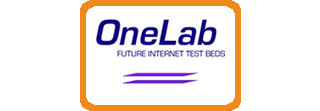Software Defined Radio testbed
NITlab developed a software defined radio (SDR) testbed that consists of 10 Universal Software Radio Peripheral (USRP) devices attached to the NITOS wireless nodes. USRPs allow the researcher to program a number of physical layer features (e.g. modulation), thereby enabling dedicated PHY layer or cross-layer research.
More specifically, USRPs connect to a host computer through a high-speed USB or Gigabit Ethernet link, which the host-based software uses to control the USRP hardware and transmit/receive data. Some USRP models also integrate the general functionality of a host computer with an embedded processor that allows the USRP Embedded Series to operate in a standalone fashion.
USRPs are commonly used with the GNU Radio software suite to create complex software-defined radio systems. The USRP product family includes a variety of models that use a similar architecture. A motherboard provides the following subsystems: clock generation and synchronization, FPGA, ADCs, DACs, host processor interface, and power regulation. These are the basic components that are required for baseband processing of signals. A modular front-end, called a daughterboard, is used for analog operations such as up/down-conversion, filtering, and other signal conditioning. This modularity permits the USRP to serve applications that operate between DC and 6 GHz.
In stock configuration the FPGA performs several DSP operations, which ultimately provide translation from real signals in the analog domain to lower-rate, complex, baseband signals in the digital domain. In most use-cases, these complex samples are transferred to/from applications running on a host processor, which perform DSP operations.
USRP Devices
NITlab has equipped the SDR testbed with 6 USRP1 and 4 USRP N210 devices, placed in such way to cover as much area as possible of the wireless testbed. Details for each device are stated here.
RF Daughterboards
NITlab has equipped the USRPs with 2 different daughterboards, the XCVR2450 and the SBX which are the most appropriate for the multiple areas of the research taken place in NITOS testbed (802.11a/b/g/n, LTE, WiMAX, ZigBee). Descriptions for both daughterboards are stated here.


